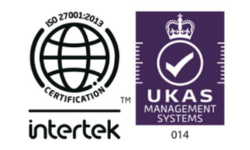A staffing plan, also known as a staffing model, is an essential process for HR professionals. It provides a strategic roadmap to align an organisation’s talent requirements with its business objectives, ensuring efficient hiring processes, talent management, and workforce optimisation. In this article we will discuss why a staffing plan is important for businesses looking to grow and how to create one. Find out more below.
The importance of staffing planning
A staffing plan highlights the roles needed in each business unit, the necessary skills and competencies, succession planning, the staffing budget, and ongoing development initiatives. With skills shortages impacting most industries worldwide, effective staffing planning is critical.
Current employees can fill more than 60% of a company’s future roles if the right planning and development programs are in place. Ensuring you have a strong HR platform within your business is an important step for a business staffing plan. Talk to PayEscape today and find out more about how our payroll and HR software can benefit your business.
The role of HR in staffing planning and analysis
HR professionals have an important role in creating a well-crafted staffing plan that:
– Minimises labour costs
– Maximises productivity
– Provides a competitive edge in the market
– Improves the quality of new hires
– Reduces staff turnover
– Drives career and skills development
– Fosters a more engaged and satisfied workforce
When including the soft costs such as departmental leaders’ and managers’ time spent on screening and interviewing candidates, employers could spend three to four times a role’s salary on hiring. It is essential to hire for roles that the company needs and ensure top talent remains within the organisation.
Benefits of developing a staffing plan
Creating a staffing plan offers numerous benefits for HR and recruitment professionals, including:
Improved recruitment mechanisms
A staffing plan helps better understand the company’s hiring needs by assessing current practices. By identifying the necessary skills in a candidate, you can implement more effective recruitment mechanisms. For example, you could use your staffing plan to determine the best platform for recruiting candidates with technical skills.
Reduced staffing costs
Hiring qualified professionals using a staffing plan can reduce recruitment costs. Restructuring existing positions to hire internally and implementing cohesive training methods and strategies can increase performance and efficiency, further reducing costs.
Organised company structure
An established staffing plan helps create a more organised company structure, allowing the HR department to operate more efficiently and fill skills gaps more quickly. It also aids in developing employee promotion plans and salary structures.
Increased opportunity for growth
A staffing plan helps expand a company’s current staff and create a more efficient structure. By designing a detailed staffing plan, you can create a framework for the company’s future. This framework assists in expanding operations through new hires or redesigning existing positions.
How to create a staffing plan
Creating an effective staffing plan involves several steps:
Determine your business goals
Evaluate the goals you want to achieve by considering the organisational objectives that might affect hiring. For example, if your organisation plans to expand into a new market or expects to sell products to a new demographic by a certain date, consider how that might affect your staffing goals. Aligning your staffing goals with the organisation’s strategic objectives is crucial for effective planning for the long term.
Assess current staff
Compile a list of current job descriptions and analyse the existing staff, including the number of employees, team sizes, and the competencies of each member. This assessment helps identify skills gaps and departments that may need additional professionals. It also serves as a useful reference when recruitment begins. Find out more how to measure employee success here.
Analyse staffing patterns and changes
Understanding staffing patterns helps develop a staffing plan that accounts for changes, aiding in better forecasting of future staffing needs. For example, some organisations experience busier seasons requiring additional team members. Analysing staffing and seasonal patterns allows you to predict these needs accurately. Consider the following forecasted changes in your staffing plan:
– Expected job growth
– Upcoming retirements
– Maternity and paternity leaves
– Upcoming promotions
Project future staffing needs
Create a projection for your future staffing needs based on your analysis of staffing patterns. Consider your budget and recruitment resources when planning.
Staffing prediction techniques
Below are common staffing prediction techniques used within the HR sector:
Rule of thumb: Predict potential needs based on existing structures. For example, hire another manager for every three new roles you fill if you have a manager for every three employees.
Delphi technique: Use the expert opinions of high-level managers and consultants to determine staffing predictions. Compile their opinions and suggestions anonymously and have the group vote to establish the preferred staffing plan.
Productivity ratio: Calculate how much work one employee produces and determine future recruitment needs based on predicted growth in productivity.
Statistical regression analysis: Compare previous labour and staffing to future predictions to make accurate staffing forecasts.
Complete a skills gap analysis
A skills gap analysis assesses your current and future staffing needs by identifying discrepancies between the desired and actual skills of staff. This analysis helps update your staffing plan accordingly.
Identify the skills currently missing among staff that the organisation may need in the future. Additionally, recognise any additional skills team members may have that can be leveraged in new roles.
Consider organisational requirements
Compare the current roles in the company with the forecasted roles necessary for achieving organisational objectives. List the roles the organisation needs to fill soon, describing the ideal skills and requirements for each position. This clarity aids in the recruiting process, making it easier to search for professionals with the desired skills or experience.
Additionally, review your recruiting software and technology to improve the efficiency of your staffing plan. Consider software programs that assist with various human resource areas such as:
– Customer relations management systems
– Content management systems
– Digital shared calendars
– Digital file sharing
– Online workspaces
– Automated travel services
Create a staff training programme
Implement a system for training new and existing employees to improve your staffing plan. Effective training helps new professionals develop the skills needed to succeed in their roles. Use performance reviews and employee surveys to identify areas for potential growth and locate professional development opportunities. This data helps teams improve their performance.
Examine workplace culture
After fulfilling your recruitment needs and planning for future needs, assess organisational culture to enhance employee satisfaction and retention. A positive culture fosters a more engaged and invested workforce. Develop surveys or provide a way for employees to offer anonymous feedback to evaluate organisational culture and satisfaction.
Final steps
By regularly updating the staffing plan and fostering a positive workplace culture, organisations can improve recruitment mechanisms, reduce staffing costs, create a more organised structure, and increase growth opportunities. As a leading software provider for HR, payroll, and time management, PayEscape can assist organisations in creating effective staffing plans to achieve their business objectives and maintain a competitive edge in the market.














